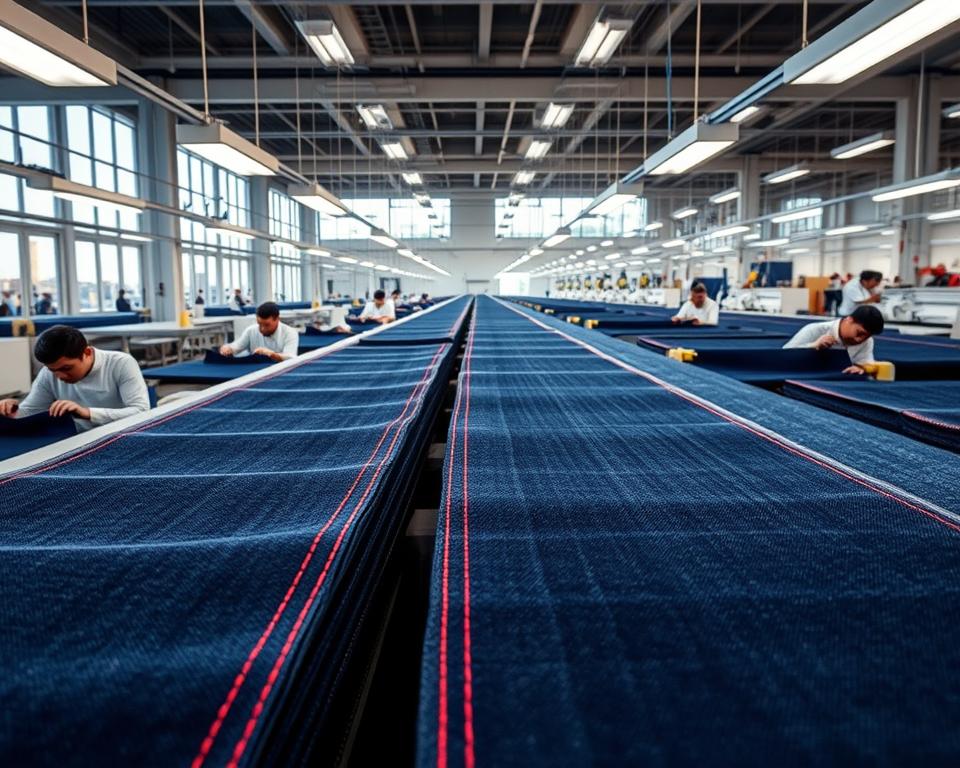Short-Term Rental Cleaning: Ensuring Your Airbnb Is Pristine
Ever thought about a spotless environment could alter a guest’s impression and convert a quick stay into an experience to remember? In the competitive world of vacation rentals, a clean property is crucial, not merely a bonus. Professional Airbnb housekeeping is crucial for satisfying visitor demands. With more travelers looking for unique places to stay, enlisting a professional cleaning team is vital for earning repeat visitors and favorable reviews.
Housekeeping brands like Merry Maids and Molly Maid provide tailored Airbnb cleaning offerings. Enabling property owners to attend to other matters while their properties remain pristine. This benefits both property owners and visitors.
Grasping Why a Spotless Rental Matters
Maintaining cleanliness in rentals is key to ensuring guest satisfaction. An immaculate space greatly enhances visitor satisfaction. Rentals prioritizing hygiene enjoy improved ratings and testimonials. A clean space fulfills expectations, instills confidence, and creates a cozy atmosphere.
Studies reveal that hygiene is crucial for Airbnb performance. Rentals committing to regular sanitization and care receive increased bookings. A tidy rental draws attention, fostering loyalty and favorable referrals.
Below is a table demonstrating how cleanliness metrics correlate with guest happiness and Airbnb performance.
| Visitor Contentment Element | Importance Rating (1-10) | Effect on Reservations |
|---|---|---|
| Tidiness | 10 | Significant |
| Locale | Eight | Medium |
| Facilities | Seven | Mid-Level |
| Cost | 6/10 | Medium |
Prioritizing neatness fulfills guest needs and builds a foundation for enduring rental prosperity. Establishing a reputation for cleanliness can lead to lasting relationships with guests, ensuring both satisfaction and loyalty.

Perks of Hiring a Professional Rental Cleaner
Hiring experts for vacation rental cleaning provides countless benefits for hosts. A major advantage is time-saving cleaning services. This allows hosts to focus on other important tasks, such as managing bookings and improving guest experiences. Managing several rentals makes keeping them clean a daunting effort.
A further perk is guaranteed consistent cleaning quality. Trained cleaners implement detailed hygiene procedures. They ensure every corner of a rental is thoroughly cleaned and sanitized. Kitchens, bathrooms, and common areas – every frequently used surface gets the care it needs. Such thoroughness preserves a best-in-class hygiene record, crucial in a bustling rental market.
Employing such services not only improves your tidiness standards but also provides added benefits. These may include deep cleaning and specialized services tailored to meet unique property needs. These selections assure hosts that their listings will consistently be in guest-ready condition.
Anticipating an Airbnb Cleaning Service
Clarifying cleaning standards is crucial when getting ready for visitors. Dedicated cleaning crews adhere to a comprehensive to-do list for sanitation guidelines. Their main emphasis is on kitchens, restrooms, and sleeping areas.
Brands like Molly Maid and Merry Maids recognize the value of exhaustive sanitization. Under their detailed cleaning services lie numerous chores. These include sanitizing kitchen counters and appliances, disinfecting bathrooms, and dusting and vacuuming living areas.
They swap out and launder bedding in sleeping areas and polish windows and reflective surfaces. Guests will find fresh linens, sparkling fixtures, and a welcoming atmosphere upon arrival. Such focus on specifics elevates their stay and enhances their view of your property.
An effectively implemented hygiene roadmap secures reliability and delight. This has a profound effect on your Airbnb’s attractiveness.
Specialized Airbnb Cleaning Services
Managing an Airbnb rental benefits greatly from specialized cleaning services. Such offerings target holiday rentals, handling everyday and intensive sanitation requirements. Merry Maids, for example, provides customizable packages for each property’s unique requirements.
One hallmark of these offerings is comprehensive deep cleaning. This entails scrubbing appliances, cabinets, and commonly used surfaces. This guarantees that the property is both spotless and disinfected. It offers peace of mind for both hosts and guests.
Turnover cleaning for Airbnbs means readying the space swiftly and completely between visitors. It focuses on maintaining high standards in a short time. Renters can opt for options covering linen changes, restocking supplies, and deep cleaning for the next guests.
A growing number of guests look for green cleaning approaches. Niche cleaning offerings frequently employ eco-friendly products, catering to rising sustainability requests. This approach makes a property more attractive, showing the host’s care for guests’ health and the environment.
To wrap up, employing tailored cleaning services markedly boosts the guest’s stay. It elevates delight, driving glowing feedback and higher occupancy.
Picking the Ideal Airbnb Housekeeping Service
Evaluating multiple criteria is crucial when choosing an Airbnb cleaning firm to guarantee dependability and excellence. Hosts should first evaluate the service reputation of the companies they are considering. Reading reviews and testimonials can offer insights into the experiences of previous clients.
Transparent communication matters most when choosing cleaning services. Selected firms must reply efficiently to questions. This professionalism helps in building a smooth working relationship.
Customized service packages are essential to meet different hosting needs. Seek a provider offering adaptable options. This enables hosts to select tasks fitting their rental’s demands and calendar. The package might feature bedding service, thorough disinfection, or supply restocking.
Verifying insurance and bonding provides protection. This safeguard addresses potential mishaps, letting hosts rest easy about their rentals.
Understanding the specific needs of short-term rental turnovers is critical. Companies specializing in Airbnb cleaning can provide seamless service. They enable rapid turnovers with top-notch cleanliness maintenance.
Quick Turnover Services for Airbnb Hosts
Turnover housekeeping is central for hosts striving for swift cleaning between stays. It secures fast turnovers, supporting smooth changeovers for incoming visitors. Merry Maids and similar companies offer customized cleaning solutions for busy hosts.
Employing a turnover cleaning service lets hosts freshen several listings in a single day. This boosts cleanliness and occupancy rates. Moreover, it grants hosts extra time to enhance guest experiences, assured that experts manage the cleanup.
In the competitive short-term rental market, timely and thorough cleaning is key. A reliable turnover service helps hosts maintain their schedules and increase profits. Professional cleaning ensures properties remain spotless, providing guests with a pleasant stay.
Strategies to Preserve Cleanliness Between Guests
Maintaining a guest-ready rental means employing smart hygiene tactics. Begin with quick spot cleaning after each guest departs. This approach helps maintain cleanliness by addressing visible messes promptly. Target frequently used areas such as countertops, switches, and remotes since they gather dirt quickly.
Keep cleaning products nearby to promote consistent upkeep. A well-stocked cleaning caddy simplifies the process, allowing you to handle any issues that pop up between bookings. A detailed cleaning schedule is also essential. It should include daily tasks like wiping down surfaces and weekly deep cleaning activities for floors and bathrooms.
Creating a checklist for post-guest cleaning tasks is beneficial. This makes certain you cover every spot in an organized manner. Adhering to these pointers helps you craft an inviting environment that promotes guest happiness and repeat bookings.
Eco-Friendly Cleaning Choices for Your Airbnb
Selecting environmentally safe cleaning options for your Airbnb markedly increases its charm. Numerous cleaning companies currently employ green products, which are both eco-conscious and efficient. These environmental methods keep your rental hygienic and appeal to sustainability-minded visitors.
Companies like Molly Maid prioritize utilizing milder cleaning compounds. This dedication to green cleaning attracts guests who care about sustainability. An environment free from harsh toxins boosts well-being and earns favorable feedback plus additional reservations.
When researching eco-friendly housekeeping, choose companies honest about their item selections. Consider these primary benefits of implementing eco-friendly sanitation in your property:
- Health benefits: Enhanced indoor air and decreased allergy risks for travelers.
- Environmental impact: Minimized utility usage.
- Guest satisfaction: More travelers seek eco-friendly places to stay.
Keeping Cleaning Standards Consistent for Airbnb
Within the fierce vacation rental market, steadfast cleaning is crucial for visitor happiness and repeat stays. Visitors anticipate a pristine space from the moment they enter. This makes hiring a reliable service essential for hosts. Partnering with a trustworthy cleaning service streamlines operations, ensuring cleanliness standards are met every time.
Scheduled cleanings deliver the dependable timetable hosts prefer. Having predetermined service slots makes handling the property simpler. This alleviates hassle and doubt, guaranteeing the property is guest-ready.
Setting up a regimen with a trusted cleaning company promotes an enhanced guest experience. Steady care preserves the property’s appeal and garners confidence. Guests who enjoy a consistently immaculate space are more likely to leave positive reviews, boosting the property’s reputation.
| Sanitation Service Offerings | Benefits |
|---|---|
| Scheduled Cleanings | Secures tidiness for all travelers |
| Skilled Cleaning Staff | Meets high cleaning standards |
| Customizable Packages | Tailored solutions for different property needs |
| Service Quality Checks | Uniform excellence in cleaning |
Emphasizing these points, hosts can secure superior cleanliness and steady service quality. This pursuit of excellence fulfills guest demands now and lays the groundwork for enduring rental prosperity.
Maximizing Positive Reviews through Cleanliness
Cleanliness is key in shaping guest perceptions and experiences. Properties that maintain high cleanliness standards tend to receive more positive Airbnb reviews. Visitors are at ease and valued in a spotless setting, resulting in greater delight.
High cleanliness standards create a lasting impression. Renters emphasizing tidiness raise their rental’s attractiveness and garner better scores. Visitors usually mention crisp bedding, pristine washrooms, and organized spaces. Attending to these aspects raises the likelihood of securing top ratings.
For peak visitor happiness via hygiene, owners ought to set up routine deep cleaning plans. Such foresight keeps the rental appealing and in prime condition. Clean, friendly environments lead to positive word-of-mouth and repeat bookings.
| Hygiene Component | Visitor Impression | Influence on Feedback |
|---|---|---|
| Fresh Linens | Creates a sense of luxury | Increased probability of good ratings |
| Immaculate Washrooms | Boosts feelings of cleanliness and comfort | Direct correlation with 5-star ratings |
| Organized Spaces | Facilitates a peaceful atmosphere | Raises likelihood of loyal visitors |
| Focus on Specifics | Reflects thoroughness and concern | Improves overall guest satisfaction |
By upholding superior sanitation, hosts transform one-time guests into returning ambassadors. A clean rental not only attracts bookings but also secures long-term success in the competitive Airbnb market.
Conclusion
Engaging a reliable Airbnb cleaning provider is essential to preserve top-quality standards in short-term rentals. Hygiene greatly influences booking levels and visitor happiness. This guarantees travelers feel comfortable and appreciated right away.
Investing in professional cleaning saves time and boosts rental excellence. In a competitive market, clean spaces lead to repeat bookings and positive reviews. Therefore, selecting a dependable cleaning company isn’t just practical; it’s tactical for reputation-building.
Thanks to a reliable cleaning team, property owners can attend to other important business facets. A clean property and happy guests lead to success. Tidiness is crucial for remarkable stays, forging the path for sustained success in holiday rentals.









